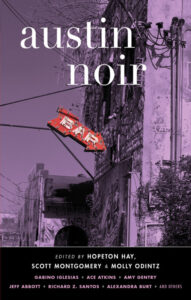|
Alvin Karpis (August 10, 1907–August 26, 1979, born Alvin Karpowicz), nickname “Creepy” , was a noted criminal in the United States known for his alliance with the Barker gang in the 1930s. He was the last “Public Enemy” to be taken, a capture which elevated J. Edgar Hoover and the FBI to national prominence. His stay at Alcatraz, a little over 25 years, was longer than any other inmate interned there. Early lifeKarpis was born in Montreal, Quebec, Canada, and was raised in Topeka, Kansas. He started in crime at about age 10 running around with gamblers, bootleggers, and pimps. In 1924 he was sentenced to 10 years at the State Industrial Reformatory in Hutchinson, Kansas, for an attempted burglary. He escaped and lived with his parents for a time in Chicago. After moving to Kansas City, Missouri, he was caught stealing a car and sent back to the Reformatory. Transferred to the Kansas State Penitentiary in Lansing, Kansas, he met Fred Barker who was in prison for killing a policeman during a car theft. Barker was one of the notorious members of the “Bloody Barkers” as the newspapers of the time had called them. The Barker family included the brothers Herman, Lloyd, Arthur or “Doc”, and Fred, the sons of Ma Barker. Growing up impoverished in a sharecropping family, all the boys soon turned into hardened criminals, robbing banks and killing without provocation. Doc, the leader, was sentenced to life imprisonment in 1920 after murdering a night watchman. Herman committed suicide in 1927 after being badly injured in a shootout with police following a robbery. Lloyd was sentenced to 25 years in 1922 for mail theft. Ma did her part to help her sons. In her lifetime she was never wanted for, nor charged with, any crime. Nevertheless, she badgered parole boards, wardens, and governors to the point where she won Fred’s release in 1931, and even managed to get Doc released on a governor’s pardon. After Karpis was released in 1931, he joined up with Fred Barker in Tulsa, Oklahoma, and they soon put together the Karpis-Barker gang. Alliance with BarkersThe Karpis-Barker gang became one of the most formidable criminal gangs of the 1930s. They did not hesitate to kill anyone who got in their way, even innocent bystanders. They robbed a number of banks, hijacked mail deliveries, and soon turned to the lucrative field of kidnapping. In 1933 they kidnapped William Hamm, a millionaire Minnesota brewer. His ransom netted them $100,000. Shortly after this, they abducted Minnesota banker Edward Bremer, Jr., whose ransom brought them $200,000. The group was led by Alvin, who had a photographic memory and was described as “super-smart” by fellow gang member Fred Hunter. The other leaders were Doc and Fred, both now out of prison, and included about 25 others. At this time a myth was started that Ma Barker ruled the gang with an iron fist, but the facts do not seem to support these claims. It is highly unlikely that criminals as adept as Karpis, and even Ma’s sons for that matter, would have listened to her. Karpis later wrote about this subject in his memoirs: “Ma was always somebody in our lives. Love didn’t enter into it really. She was somebody we looked after and took with us when we moved city to city, hideout to hideout. It is no insult to Ma’s memory that she just didn’t have the know-how to direct us on a robbery. It would not have occurred to her to get involved in our business, and we always made it a point of only discussing our scores when Ma wasn’t around. We’d leave her at home when were arranging a job, or we’d send her to a movie. Ma saw a lot of movies.” The kidnappings, however, would lead to the gang’s end. The father of the kidnapped Edward Bremer Jr. was a friend of president Franklin D. Roosevelt. FDR had even mentioned the kidnapping in one of his fireside chats, and fueled also by the Lindbergh kidnapping, the FBI and local police bureaus greatly stepped up their pursuit of those engaged in these type of crimes. The FBI had by this time organized a group of highly skilled agents called the “flying squads” who specialized in hunting down the leading public enemies, and much progress was being made. The year 1934 alone saw the deaths of John Dillinger, Bonnie and Clyde, Charles “Pretty Boy” Floyd, and George “Baby Face” Nelson. With these big-name hoodlums out of the way, the FBI stepped up one of the most persistent manhunts of the time for the Karpis-Barker gangmembers. One incident that aided the FBI greatly was when the gang shot and killed one of their own members, George “Shotgun” Ziegler. Ziegler had been one of the masterminds of the Bremer kidnapping, but after he collected the ransom money, which he kept most of, he began loudly bragging to underworld associates that he was the genius behind the kidnapping. It appeared the one-time hitman for Al Capone, and a lead suspect in the St. Valentine’s Day Massacre, had lost his senses, and the gang knew it couldn’t risk having him spill valuable information. On March 22, 1934, members of the gang shot four slugs into Ziegler as he was coming out of his favorite restaurant in Cicero, Illinois, which nearly decapitated him. The assassins left the corpse, however, and subsequently FBI agents found names, aliases, addresses and other valuable information on the gang in Ziegler’s pockets. Armed with this information the FBI used it to pick them off one by one, and soon they began getting the big names. Doc was captured on January 8, 1935, by Melvin Purvis who, nearly six months earlier, had hunted down John Dillinger. (Sent to Alcatraz, Doc was shot and killed by guards during an attempted escape in 1939.) Just one week later agents tracked down Ma and Fred at a cottage in Lake Weir, Florida. On January 16, Ma and Fred were shot to death after a 4-hour gun battle. Just after Ma and Fred’s death, Karpis nearly met his own violent end when the FBI located him in Atlantic City, New Jersey. Karpis and a couple of other partners managed to shoot their way to an escape, though Karpis’s eight-month-pregnant girlfriend Dolores Delaney was shot in the thigh by police. He continued his crimes with others, but had to be on the move more than ever as he was the fourth and last Public Enemy Number 1 left (the previous three having been killed). He did manage to pull off a crime that echoed times of the “Old West”, a train robbery in Garrettsville, Ohio, which netted $27,000. After the death of Ma and Fred, Karpis sent word to J. Edgar Hoover that he intended to kill Hoover the way Hoover had killed Ma and Fred. Pursuit and Capture by FBIThe FBI had come a long way since its reorganization and renaming in 1935 (from the Bureau of Investigation, created in 1908). J. Edgar Hoover was appointed as the acting head of the Bureau in 1924 and completely transformed the agency. Despite its successes, however, the agency had many problems. In those days, when the application of science and technology to fight crime was still in its infancy, the agency was at the mercy of public citizens for information. Often agents were sent off to remote locales that turned out to be red herrings due to bad information. The personal nadir for Hoover came at an April, 1936 Senate hearing. Tennessee Senator Kenneth D. McKellar lambasted Hoover for the performance of the FBI and the fact that Hoover himself had never personally arrested anyone. After the hearing a determined Hoover vowed he would capture Karpis personally. Hoover would not have to wait long. On May 1, 1936, the FBI located Karpis in New Orleans, and Hoover flew in to be in charge of the arrest. As a dozen or so agents swarmed over Karpis’s car, Hoover announced to Karpis that he was under arrest. A couple of versions of the arrest are reported. One, told by Karpis in his memoirs, was that Hoover came out only after all the other agents had him seized. Only then did the agents call to Hoover that it was safe to approach the car. The official FBI version, however, states that Hoover reached into the car and grabbed Karpis before he could reach a rifle in the back seat. In fact the car, a Plymouth coupe, had no back seat. The whole fiasco was further aggravated when Hoover told his men to “put the handcuffs on him”. Not one agent had brought handcuffs and Karpis was tied up with the necktie removed from an agent’s neck. Whatever the real story, the capture of Karpis catapulted Hoover’s name into the public eye, and that name would be synonymous with law enforcement until his 1972 death. The capture of Karpis essentially ended the age of the big-name depression-era criminals. In addition to those mentioned earlier, others killed violently in the ’30s were Jack “Legs” Diamond, Vincent “Maddog” Coll, Frank “Jelly” Nash, and Dutch Schultz, and while as an inmate of Alcatraz, Al Capone was slowly going insane from syphilis. The country had gradually started to recover from the Great Depression and economic times had improved, and law enforcement agencies had improved as well. *Richard Kudish, CourtTV Crime Library
*Jay Robert Nash, Almanac of Crime, 1986 *Carl Sifakis, The Encyclopedia of American Crime, 1992 |

Blog
The Oxford Conference of the Book
Hey, guys. I’ll be a guest at the Oxford Conference of the Book this coming Friday – March 31 at 1:30 p.m. – to talk

